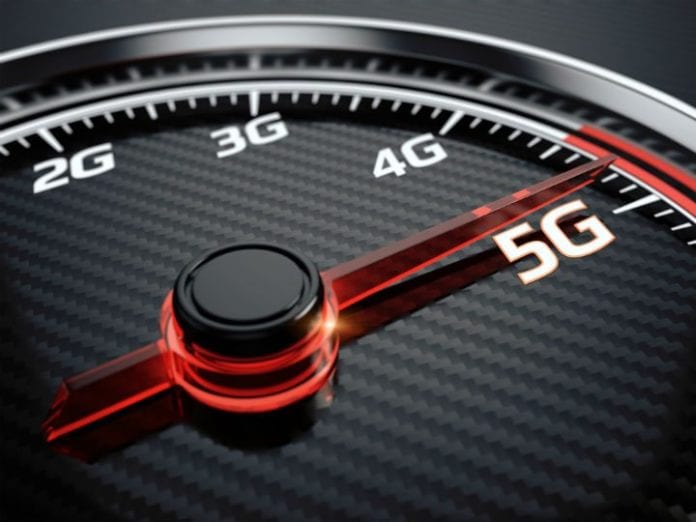It was a huge deal when wireless carriers started launching 4G/LTE less than a decade ago—not just because of the speeds for consumer downloading and streaming, but for the broader implications of those speeds. LTE was the promise of telemedicine, enhanced technology for first responders, smart home technology and a lot more. And to an extent, we’ve reaped the benefits of the faster wireless connectivity the standard offers.
The introduction of 5G technologies could not come at a better time. With the advent of the
Internet of Things came the need to be able to effectively connect, manage and integrate smart devices into businesses’ network architectures. But how can we effectively integrate all these new devices that are varied and non-centralized with high-speed systems? The short answer is 5G.
This next big step will tap into both licensed and unlicensed spectrum to ultimately deliver what will rival, and even surpass, many of our wired options for connectivity. But the dream is not quite a reality just yet. It needs a concerted effort to succeed. Here’s how 5G is coming about and what we can expect if it all goes right.
The road up to 5G
LTE-Advanced Pro, a critical step to 5G, is now official. It includes 3GPP Release 13 (published last year) and upcoming Release 14 (to be published mid-2017). LTE-Advanced Pro calls for increased throughput up to 3Gbps per cell or user equipment (UE). This is a significant increase over what the LTE-Advanced specs call for which is ~1Gbps.
Unlike a wired network, it is difficult to fatten the wireless pipe to increase your data throughput to the user. This is because wireless networks have to operate over the air at the bands they have obtained permission for operating at, which costs billions of dollars. There is a very limited supply of licensed and regulated bands, inhibiting the resources that can create a “fatter” pipe even if the technology allows it.
Wi-Fi, on the other hand, is less regulated and operates for “free” in unlicensed or unregulated bands over the air. There are lesser rules on who can access this medium and there is more available spectrum compared to its licensed counterpart.
But with recent innovations, operating LTE in the unlicensed spectrum has become plausible. Starting with LTE-U and now evolving to LAA and Multefire, the experience of operating LTE in these spectrums has vastly improved. This provides a great option for operators to add/fatten the data pipes in addition to their licensed spectrum.
Harnessing this opportunity, LTE-A Pro allows the use of unlicensed spectrum where possible to reach higher data speeds like 3Gbps. This will be used to augment the licensed spectrum, effectively adding these bands to create a fatter data pipe that could transport multiple times the data that we can today.
In addition, the user experience improves dramatically as they move from licensed to unlicensed spectrum and back, all on LTE instead of handling back and forth with Wi-Fi that is unreliable.
Eventually, the 5G spec, which will be released in June 2018, will come up with details on higher bands (mmwave bands), where we also have vast amounts of licensed and unlicensed spectrum. It will demonstrate how we could effectively utilize those bands to increase the user data speeds to 10 Gbps. Until then, using carrier aggregation and LTE on unlicensed spectrum will get us on the path to increased data speeds and improved user experience.
New tech for a new world
I want to call out a couple of use cases that would greatly benefit from the additional bandwidth provided by the unlicensed spectrum:
Imagine an augmented reality device that transports you and your spouse to Paris for an evening. This would require high-speed data (8K video) but soon the promise of providing that live experience from a backyard will become a reality.
There is also the likelihood seamless wireless experiences — moving from outdoors to indoors while watching a live football game will be perfect for BBQs. The seamless connectivity required with one medium will be possible with LTE that can operate outdoors on the licensed spectrum and indoors on the unlicensed one.
As we get more comfortable with this and speeds continue to increase, having a surgeon oversee a heart transplant thousands of miles away is not too far from reality.
Word to the wise
But benefits do not just happen because of an upgrade in network connectivity and a new generation of devices. In fact, there will be no benefits if businesses and individuals alike don’t understand the nuances and risks of 5G.
Consider that 5G in its prime will really enable the multi-faceted network that houses devices of all requirements. Now imagine what it will be like to maintain a line of visibility and control into that same environment. It will be a daunting task. Testing and monitoring, in general, will also face difficulties, as environments continue to embrace new devices in networks that are no longer traditionally configured and deployed. Security too. No one really controls the unlicensed spectrum, much like a public hotspot, making it easier for nefarious hackers to hijack devices or listen in on network activity.
Ultimately, there will be no stopping 5G. It’s an inevitable necessity as we continue to increasingly depend on software and smart technology in our daily lives. What broadband was to DSL, 5G will be for LTE. Will we be ready?

